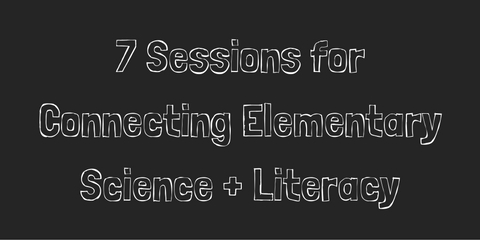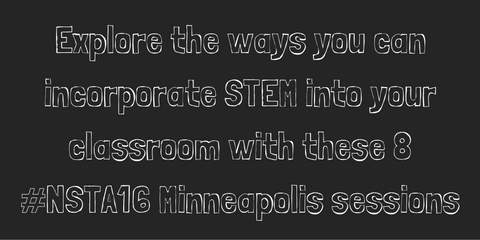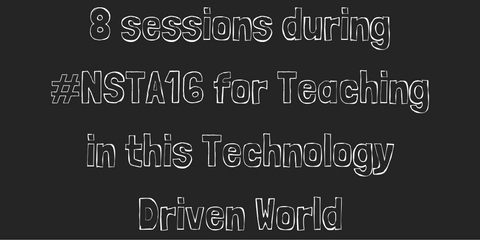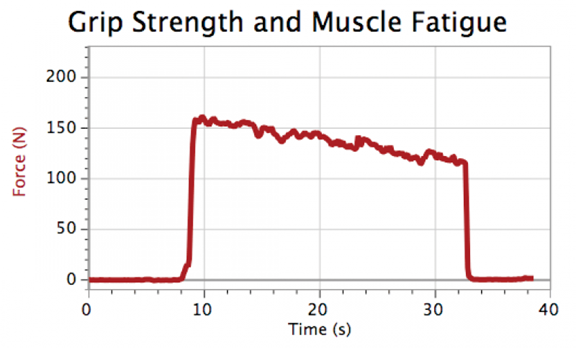Teens Flock to Science Cafés
By Debra Shapiro
Posted on 2016-09-06
Science cafés—events held in casual, social venues where attendees can listen to and interact with scientists—have become common worldwide. Many U.S. science cafés are modeled after Café Scientifique, a United Kingdom–based grassroots network of science cafés organized by Duncan Dallas in 1998. When Michelle Hall and Michael Mayhew heard Dallas speak about Café Scientifique at a 2006 American Association for the Advancement of Science meeting, they wondered if the same model could provide “a way to have high school students challenge themselves about what they believe [about science] and why, and how science and technology are changing their lives,” says Hall, a geophysicist, science educator, and president and chief executive officer of Science Education Solutions, a research and development company in Los Alamos, New Mexico.
Hall and Mayhew, a geophysicist who serves as senior research scientist for Science Education Solutions, also thought a Café Scientifique for teens would give them access to scientists and scientific research, help them see scientists as real human beings leading interesting lives, and encourage them to consider science, technology, engineering, and math (STEM) careers. In 2008, with National Science Foundation (NSF) funding, they established Café Scientifique New Mexico in four towns: Los Alamos, Albuquerque, Santa Fe, and Española. “These are very different communities, but the impact on the teens was the same in all of them: The teens enjoyed it,” Mayhew reports.
By 2012, other organizations expressed interest in starting teen science cafés (TSCs). After obtaining additional NSF funds, Hall and Mayhew established the Teen Science Café Network (TSCN) to spread the model nationwide. The network is active in 23 states, with 50 individual sites nationwide. TSCN offers free

At the Open Minds Teen Science Café in Raleigh, North Carolina, David Roberts, assistant professor of computer science at North Carolina State University, and his dog Diesel demonstrate wearable technology that allows service dogs to communicate with their handlers. (photo courtesy of Open Minds Teen Science Cafe–Raleigh)
memberships to TSC coordinators, along with online training and a national on-site training event. New members can apply for a grant of up to $3,000 to help pay for food and materials for hands-on activities—essential elements of TSCs.
Though adults, including some teachers, establish TSCs at venues like science centers, zoos, museums, aquariums, and libraries, Teen Leadership Teams at each site—guided by adult coordinators—“recommend the topics they’re interested in, do the marketing, and coach the speakers,” explains Hall. Adult coordinators often ask science teachers to recommend students for teen leader positions.
“We really want it to be teen-driven; it gives kids a voice and helps them learn skills and get comfortable with adults outside their families and schools,” she maintains. “The scientists have to pitch their presentations to the teen leaders, and the teens give them feedback. This is a big role reversal for these kids, and the scientists take their words to heart.” Presenters are asked to keep their talks briefer than they would at an adult café “because teens have lots of questions,” she explains, adding that the program is intended to be a series of lively conversations among teens and presenters, not a lecture series.
The cafés allow students to learn more about concepts introduced in school. “What was abstract in school can become concrete,” says Hall. It’s also easier for scientists to attend an after-school or evening café than to visit schools during their workday, she points out.
“Once we get [scientists] to become adept at communicating with teens, they’re in a position to present effectively to other audiences [because] they get better at it,” Mayhew contends.
Generally, parents don’t attend TSCs because “teens might not ask questions with their parents there,” says Hall, especially when topics like the effects of alcohol and drugs are being discussed.
“And we want all kids to come, not just the ones who claim to be already interested in science. We’ve been successful in that,” observes Mayhew.
In North Carolina, Open Minds TSCs take place at the North Carolina Museum of Natural Sciences in Raleigh and at two other sites, funded by the Duke Energy Foundation. TSCs “are a way to connect teens to science careers,” says Lynn Cross, head of youth programs at the Raleigh site. “Teens can ask a presenter what he or she studied in college and what his or her workday is like.”
“Teens are typically not served in museums because it’s hard to attract them,” Kathryn Fromson, coordinator of youth programs in Raleigh, points out. “The café model is fun, relaxed, and social, and they like drop-in events [for which] you don’t have to register, just show up,” she reports.
Teens enjoy doing the hands-on activities, and “in this competitive setting, they enjoy being graded and winning prizes,” she contends.
Some teachers will give students extra credit for their participation. “We’re happy to have teachers use the café as a resource that way,” Cross observes. “We have supportive local teachers who bring their families.”
TSCs provide a way to “meet likeminded peers, people you don’t go to school with…It’s a free event that their parents approve of,” she notes.
Rockville Science Center in Rockville, Maryland, holds Young Adult Science Cafés with funding from the American Society for Biochemistry and Molecular Biology. Program coordinator Katherine Perez says, “The café started out as a place where middle school, high school, and college students could come together to discuss science events and issues…Later, we started inviting speakers, professionals in science and health who could talk to kids about careers, college, and graduate school.”
“Sometimes it’s challenging to have that wide of an age range,” she admits. “The middle school students tend to like doing the hands-on activities, but the older ones don’t…Some topics attract more of one [particular] age group; [a topic like] 3D printing is interesting to all ages.
“Many students attend the cafés as part of their grade,” she reports.
“We’d like to have more professionals in STEM fields giving talks adapted to younger kids. STEM fields can seem challenging to younger kids because there are not many mentorship opportunities, no push to join graduate programs, and many internships are unpaid…It’s hard to get jobs in STEM fields,” Perez contends.
“Presenters can serve as mentors or guide students to those who can help them,” she concludes.
The TSC at the Pacific Science Center in Seattle, Washington, “grew out of…Discovery Corps, a [teen] job training program,” says Tony Smith, program coordinator. “Discovery Corps teen members helped grow the program with guidance from adult staff.
“Our TSC Advisory Board has 20 to 25 teens,” Smith explains. One committee interviews scientists and serves as event moderators. “The food committee arranges for pizza and snacks,” he notes, while “the marketing committee does social media promotion.”
The Advisory Board created “a database of Seattle-area STEM teachers, and they e-mail fliers to them, encouraging them to give extra credit” to students who attend the cafés, says Smith. “We’ve had a very positive response from teachers.”
With speaker topics ranging from “health science to astrobiology to evolution and cooperation in species,” the events have also received high marks from teens. “‘I didn’t know this field even existed’ is what many of them say,” he reports.
This article originally appeared in the September 2016 issue of NSTA Reports, the member newspaper of the National Science Teachers Association. Each month, NSTA members receive NSTA Reports, featuring news on science education, the association, and more. Not a member? Learn how NSTA can help you become the best science teacher you can be.
The mission of NSTA is to promote excellence and innovation in science teaching and learning for all.
Follow NSTA
Science cafés—events held in casual, social venues where attendees can listen to and interact with scientists—have become common worldwide. Many U.S.
Dept. of Ed Releases Proposed Rules on Title I Spending
By Jodi Peterson
Posted on 2016-09-01
On August 31 the U.S. Department of Education (ED) released proposed regulations to implement the supplement-not-supplant requirement in Title I of the Every Student Succeeds Act (ESSA). The rules were quickly denounced by top Republicans and will likely set the stage for a battle over implementing the new federal education law in the waning days of the Obama administration.
The ESSA law says that when districts spend federal funds under Title I they must supplement, and may not supplant, state and local funds. Claiming that many Title I schools are shortchanged every year, and the federal funds spent in Title I schools are often used make up some or all of that shortfall, instead of providing the additional resources needed in high poverty schools, ED says the proposed rule out earlier this week “clarifies for school districts options for how to demonstrate compliance with the supplement, not supplant provision. The options include:
- A weighted student funding formula that provides additional resources for students with characteristics associated with educational disadvantage, such as students in poverty, English learners, and students with disabilities, and ensures that each Title I schools receives all of the actual funds to which it is entitled under that system;
- A formula that allocates resources including staff positions and non-personnel resources directly to schools, and that ensures each Title I school gets all of the funding it is entitled to, as measured by the sum of (1) the number of personnel in the school multiplied by the district’s average salaries for each staff category, and (2) the number of students in the school multiplied by the district’s average per-pupil expenditures for non-personnel resources;
- An alternative, funds-based test developed by the state and approved by a panel of expert peer reviewers that is as rigorous as the above two options; or
- A methodology selected by the district that ensures the per-pupil funding in each Title I school is at least as much as the average per-pupil funding in non-Title I schools within the district.
The Republican architects of ESSA reacted immediately with strong language about the proposed rule.
Rep. John Kline (R-MN), chairman of the House Committee on Education and the Workforce, said in a statement:
“The Department of Education is threatening to unilaterally impose a multi-billion dollar regulatory tax on our nation’s schools. This punitive policy will unleash havoc on schools and their students at a time when education leaders should be focused on helping children succeed in the classroom. America’s poorest neighborhoods will be hit the hardest as communities are forced to relocate teachers, raise taxes, or both. Any supposed “flexibility” is really a limited set of bad choices dictated by the secretary of education. This is not at all what Congress intended, and those who helped enact this law cannot honestly believe differently.
What the secretary is proposing is unprecedented and unlawful. The only way to make this right is to scrap this convoluted regulatory scheme immediately. Members of Congress came together to pass bipartisan reforms that are designed to help every child receive an excellent education, and we will not allow this administration to undermine these reforms with its own extreme, partisan agenda.”
U.S. Senator Lamar Alexander (R-TN), chair of the Senate Health, Education, Labor and Pensions Committee, also called the rule “unlawful” and said in a statement, “the U.S. Education Secretary must think he is the U.S. Congress as well as Chairman of a National School Board . . . The rule would regulate the way states and school districts spend nearly all state and local tax dollars on schools in order to receive federal Title I dollars. These Title I dollars are only about 3 percent of total national spending on schools.” He predicted that it would “upend state and local education funding and collective bargaining agreements in many states. If anything resembling it becomes final, I will do everything within my power to overturn it.”
The Council of Chief State Officers claimed the proposed rule was not consistent with the law, stating “Schools would be forced to move resources around at the last minute each year to try to meet a federal mandate, rather than doing what is in the best interest of students.”
The two teachers unions, concerned about teacher salaries and collective bargaining, are also not happy with the proposal. AFT called the proposed regulations “an unfunded mandate from Washington’” and the NEA said the proposed regulatory language “does not eliminate the practical limitations and unintended consequences that may arise during implementation.”
Across the aisle, Congressional Democrats praised the draft rule. In a joint statement, Senator Patty Murray (D-WA), Ranking Member of the Senate HELP Committee on Health, Education, Labor, and Pensions, and Representative Bobby Scott (D-VA), Ranking Member of the House Education Committee, said “This proposal will ensure Title I dollars are used to supplement state and local investment in public education for high-need students. For too long, the process of allocating public funds to support public education has lacked transparency and often resulted in underfunding high-poverty schools . . . With this proposal, the Department has fulfilled its responsibility to set clear expectations for compliance with statutory requirements through regulation. In addition, we believe this proposal honors Congressional intent to empower local leaders with greater latitude in the expenditure of Title I funds to support high-need students.”
And last but not least, ED Secretary John King, long an outspoken champion of equity in the law, defended the proposed rule, stating “For too long, the students who need the most have gotten the least. The inequities in state and local funding that we see between schools within districts are inconsistent not only with the words ‘supplement-not-supplant’ but with the civil rights history of that provision and with the changes Congress made to the law last year. No single measure will erase generations of resource inequities, and there is much more work to do across states and districts to address additional resource inequities, but this is a concrete step forward to help level the playing field and ensure compliance with the law.”
Shaping up to be an interesting fall in Washington D.C. Watch for updates in the next Legislative Update and read the draft rule here.
Jodi Peterson is Assistant Executive Director of Legislative Affairs for the National Science Teachers Association (NSTA) and Chair of the STEM Education Coalition. e-mail Peterson at jpeterson@nsta.org; follow her on Twitter at @stemedadvocate.
Follow NSTA
7 Sessions for Connecting Elementary Science + Literacy
By Korei Martin
Posted on 2016-08-31
The upcoming NSTA Minneapolis conference, taking place October 27-29, will have a number of sessions dedicated to celebrating elementary science and literacy connections. Children are born investigators. Science is an engaging way to develop students’ skills in thinking creatively, expressing themselves, and investigating their world. Reading, writing, and speaking are inspired through science experiences. Educators attending these sessions will gain confidence in teaching science, learn strategies for literacy and science integration, and celebrate elementary science. The 7 sessions are just a sample of what #NSTA16 attendees can expect.
Native Plants and Seeds, Oh My! (Thursday, October 27 8:00 AM – 9:00 AM)
- Cultivate new learning with a unit developed for upper elementary students that embeds reading and writing with a study of botany featuring native seeds and plants.
Developing and Implementing NGSS-Focused Curriculum in Gillette, WY: Strategies and Tools for Elementary Science and Literacy Integration (Thursday, October 27 3:30 PM – 4:30 PM)
-
Explore newly developed NGSS-focused units in grades 3, 4, and 5 with an emphasis on strategies embedded within the lessons and activities that explicitly link ELA with science.
Whoosh, Crack, Slide, and Crash Your Way into a Grade 5 Earth Science Unit (Thursday, October 27 5:00 PM – 6:00 PM)
-
Explore tsunamis, hurricanes, earthquakes, landslides, and floods through hands-on investigations and connections to literacy.
Connecting the Skills of Literacy and Science Through Children’s Literature and STEM Topics (Friday, October 28 9:30 AM – 10:30 AM)
-
We will investigate a series of activities that help to integrate science and literacy skills with a STEM focus through the use of children’s literature.
Science Notebooks—From Preservice to the Classroom (Friday, October 28 12:30 PM – 1:30 PM)
-
Science notebooks provide powerful tools to engage NGSS practices. Discover how Hamline University’s teacher education program prepares preservice teachers to successfully implement notebooks in their classroom.
Disciplinary Literacy and Reading in the Content Area of Science: Yes! You Can Do Both as an Elementary Teacher! (Friday, October 28 3:30 PM – 4:30 PM)
-
This session will provide elementary teachers with an understanding of what we mean by both reading in a content area like science and disciplinary literacy in science.
Teach Students to Read Like Scientists! (Saturday, October 29 11:00 AM – 12:00 PM)
-
Explore strategies through interactive online simulations and activities that support success in reading science texts and, most importantly, scientific inquiry.
Register to attend here—and don’t forget, NSTA members get a substantial discount!
2016 Area Conferences
National Conferences
- Los Angeles, California: March 30–April 2, 2017
- Atlanta, Georgia: March 15–18, 2018
- St. Louis, Missouri: April 11–14, 2019
- Boston, Massachusetts: March 26–29, 2020
- Chicago, Illinois: April 8–11, 2021
Follow NSTA
Explore the ways you can incorporate STEM into your classroom with these 8 #NSTA16 Minneapolis sessions
By Korei Martin
Posted on 2016-08-31
The upcoming NSTA Minneapolis conference, taking place October 27-29, is the place to be for teachers looking for ways to incorporate STEM in their classroom. STEM can be a powerful unifying theme across the curriculum and in many settings. STEM provides an opportunity for collaboration among teachers, disciplines, and schools, as well as postsecondary, informal education, and community partners. Educators attending sessions in this strand will explore models of integrated STEM education programs, learn strategies to productively STEMify lessons, and investigate how to effectively engage students. Check out the 8 sessions below to see what #NSTA16 has for your STEM implementation needs.
Building Bridges: Engineering in the Elementary Classroom (Thursday, October 27 12:30 PM – 1:30 PM)
- Learn about a unique collaboration that engaged students in STEM, literacy, and the arts. Participate in a portion of our lessons and experience firsthand the power of collaboration and building bridges together.
If They Make It, They Will Learn: The Maker Movement and K–12 STEM (Thursday, October 27 3:30 PM – 4:30 PM)
- “Making” is more than tinkering, and the Maker Movement offers powerful, project-based lessons for learning STEM in K–12 classrooms.
Inventing Is Just Plain Fun (for All)! (Thursday, October 27 5:00 PM – 6:00 PM)
- Gain experience leading a design challenge and incorporating invention to provide engaging cross-curricular opportunities using a variety of community resources.
Laser Cutters + 3D Printers + Vinyl Cutters = Bolstered K–3 Math Curriculum (Friday, October 28 11:00 AM – 11:30 AM)
- The Maker Movement is spreading across the country. Laser cutters, 3D printers, vinyl cutters, and more are starting to show up in elementary schools. Connecting students with experiential learning not only bolsters student engagement, but also solidifies learning through making. Join in for simple ways to connect the Maker Movement, 3D printers, laser cutters, and vinyl cutters to K–3 math standards.
Incorporating STEM Across the Curriculum Through Inquiry (Friday, October 28 3:30 PM – 4:30 PM)
- Come learn how to incorporate STEM across the curriculum by taking part in a few traditional lessons, then shifting them to inquiry-based lessons.
The Transition—From STEM Student to STEM Teacher (Friday, October 28 5:00 PM – 5:30 PM)
- First year teachers who went through a STEM teacher preparation program will share their experiences transitioning from being a STEM student to a STEM teacher.
Quake-Proof: Applying Newton’s Laws of Motion to Building Design (Saturday, October 29 9:30 AM – 10:30 AM)
- Through scientific inquiry, engineering practices, and mathematical calculations, students apply laws of motion to designing and testing earthquake-proof structures on simply made shake tables.
Engineering from Every Angle: Engineers as Proficient in Emotional Intelligence as Well as Analytical Skills (Saturday, October 29 11:00 AM – 12:00 PM)
- Successful engineers are proficient in engineering and human relationship skills. Join us for creative ways to include emotional intelligence in engineering that enhances student learning.
Register to attend here—and don’t forget, NSTA members get a substantial discount!
2016 Area Conferences
National Conferences
- Los Angeles, California: March 30–April 2, 2017
- Atlanta, Georgia: March 15–18, 2018
- St. Louis, Missouri: April 11–14, 2019
- Boston, Massachusetts: March 26–29, 2020
- Chicago, Illinois: April 8–11, 2021
Follow NSTA
8 sessions during #NSTA16 for Teaching in this Technology Driven World
By Korei Martin
Posted on 2016-08-31
The upcoming NSTA Minneapolis conference, taking place October 27-29, is the place to be for teachers looking for new ways to teach in this technology driven world. Students and teachers have access to many forms of technology and these technologies can be effective tools to access information, deliver instruction, communicate ideas, connect with people from around the world, and build professional learning networks. Educators attending these sessions will explore instructional materials, technologies and strategies for effective learning for students and adults, and responsible use of digital resources and processes. Below are 8 sessions that every science educator attending the area conference should go to.
Searching for Spielberg (Thursday, October 27 8:00 AM – 9:00 AM)
- Providing examples from physical and life science, as well as using multiple types of devices and apps, we will share how student-created videos can improve peer review and scientific communication, encourage critical thinking, and enhance data collection.
NASA’s Eyes on the Solar System: Bringing the Planets to Your Classroom’s Computers (Thursday, October 27 5:00 PM – 6:00 PM)
- Bring the solar system to your classroom using this free online tool from NASA. Explore planets, spacecraft, and more!.
Citizen Science: Projects and Activities to Engage Students in Authentic Science Research (Friday, October 28 9:30 AM – 10:30 AM)
- Explore citizen science projects that can engage your students in authentic science data collection and investigation as they contribute to big datasets.
Engaging Students in Science through Virtual Field Trips (Friday, October 28 12:30 PM – 1:30 PM)
- Tap into how to use social media and internet resources to design a “virtual field trip” for your students through the integration of science, ELA, and social studies
Evolution for Educators (Friday, October 28 3:30 PM – 4:30 PM)
- Explore how the Teacher Institute for Evolutionary Science strives to meet the needs of middle school science teachers as they cover the NGSS disciplinary core idea: Biological Evolution: Unity and Diversity.
Exploring the Trade-Offs and Payoffs of Sustainable Bioenergy Through Simulations and Field Data (Saturday, October 29 8:00 AM – 9:00 AM)
- Students play an online game and analyze current data from university research to construct arguments about the most sustainable methods for growing bioenergy crops.
Dissecting Animals? Frog-get About It! (Saturday, October 29 9:30 AM – 10:30 AM)
- Get hands-on experience with dissection software programs, covering educational efficacy, economic benefits, and current laws/policies regarding the use of animals in science.
Using News Media to Learn About Science in the Connected Science Classroom (Saturday, October 29 11:00 AM – 12:00 PM)
- The new science framework calls for increased use of news media, including online news. We will examine issues with this and provide some solutions.
Register to attend here—and don’t forget, NSTA members get a substantial discount!
2016 Area Conferences
National Conferences
- Los Angeles, California: March 30–April 2, 2017
- Atlanta, Georgia: March 15–18, 2018
- St. Louis, Missouri: April 11–14, 2019
- Boston, Massachusetts: March 26–29, 2020
- Chicago, Illinois: April 8–11, 2021
Follow NSTA
Vernier Go! Link: Hand Dynamometer
By Edwin P. Christmann
Posted on 2016-08-31
Vernier’s Go! Link is a single-channel USB interface used to connect many Vernier sensors directly to a Windows or Macintosh computer. This device can be connected into a USB port and can be used to connect of a variety of sensors. For this review, we used a Hand Dynamometer, which is designed to measure grip strength.
To begin using Vernier’s Go! Link, the first step is to load a software package known as Logger Lite. Logger Lite is Vernier’s free data-collection software system and includes graphics (see Figure 1). To load Logger Lite onto your device (e.g., laptop, microcomputer, etc.) go to [http://www.vernier.com/products/software/logger-lite/] for an upload. Another option worth consideration is the possibility of using Logger Pro, which although it is more versatile, it comes at a cost of $249.00. The Logger Pro software can be found at:
Logger Pro: http://www.vernier.com/products/software/lp/
Figure 1. Sample Logger Lite Display
Vernier Go! Link
The Go!Link USB sensor interface is a quick and affordable way to get started with data-collection technology. It’s a single-channel interface that connects most Vernier sensors to your computer or Chromebook USB port.
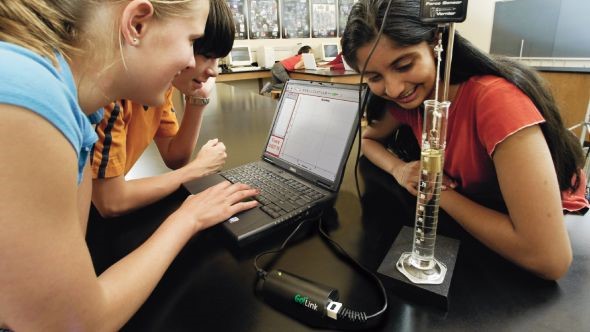
Setting up data-collection experiments is as simple as 1-2-3:
- Plug the Go!Link to a USB port and a sensor into the Go!Link.
- Start the data-logging software.
- Click on the “Collect” button to see a real-time graph!
Image 1. Vernier’s Hand Dynamometer
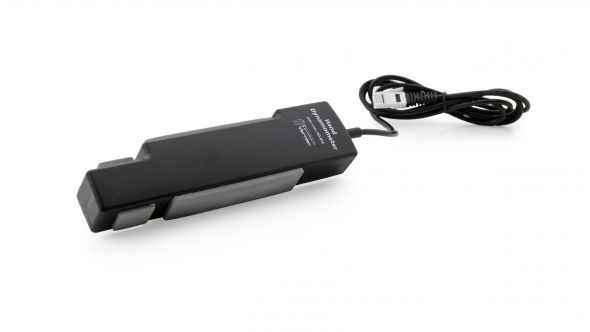
Using the Hand Dynamometer
To use the Vernier’s Hand Dynamometer, first zero it (which is an option found at the top of the menu) to define the base setting. Next, while holding the Hand Dynamometer upright, squeeze with as much force as possible and begin data collection. The force is measured in Newton units, which provides a great opportunity for students to discuss metric conversions. Once the data is collected, you will be able to examine the data in a number of ways to have students engage in research goals. For example, Logger Lite has built-in statistics applications.
Calculate Statistics and Speculate
One of the great features of Logger Lite is that it has a built-in statistics calculator. Under Analyze, if you select Statistics, students will be able to find the mean and median grip force, as well as the minimum and maximum grip force (See Figure 2). Therefore, students can compare the range of grip strength over time. Some questions for students to consider are:
- At what point does grip strength begin to decrease?
- Is the grip strength in your right hand higher than your left hand?
- If the test is repeated, can grip strength be increased by doing certain exercises?
Figure 2. Grip Strength and Muscle Fatigue
Conclusion
Having students collect data with Vernier’s Go! Link and Hand Dynamometer is an excellent technology-based inquiry device that results in meaningful scientific engagement and is commensurate with tenets of the Internation Society for Technology Education Standards for Students(ISTE, 2016).
Once again, Vernier has developed a device that can be used to is integrate the NRC Standards (i.e., Standards A & E) and shows students how using the proper scientific tools to gather data can be both relevant and exciting. Undoubtedly, when coupled with the Hand Dynamometer, the Vernier Go! Link is a durable and an easy to use device that makes learning interesting for students.
Moreover, by using current technologies, students can take accurate measurements and engage in technology-based inquiry. For example, the interactive graphs that can be generated by Logger Lite software can help students to interpret the results of their experiments and can be used to create professional laboratory reports. Based on our experience, the Vernier Go! Link with the Hand Dynamometer gives teachers an excellent tool to use in their science classroom.
Relevant ISTE Standards
Standard 3: Research and Information Fluency
Students apply digital tools to gather, evaluate, and use information.
- Plan strategies to guide inquiry.
- Locate, organize, analyze, evaluate, synthesize, and ethically use information from a variety of sources and media.
- Evaluate and select information sources and digital tools based on the appropriateness to specific tasks.
- Process data and report results.
Standard 4: Critical Thinking, Problem Solving, and Decision making
Students use critical thinking skills to plan and conduct research, manage projects, solve problems, and make informed decisions using appropriate digital tools and resources.
- Identify and define authentic problems and significant questions for investigation.
- Plan and manage activities to develop a solution or complete a project.
- Collect and analyze data to identify solutions and/or make informed decisions.
- Use multiple processes and diverse perspectives to explore alternative solutions.
Cost:
Hand Dynamometer: $99
Go!Link: $61
User Manual:
http://www.vernier.com/manuals/hd-bta/
Video Link showing Basic Capabilities in a test of grip strength comparison:
http://www.vernier.com/training/videos/play/?video=35
References:
ISTE 2016. ISTE Standards for Students
Edwin P. Christmann is a professor and chairman of the secondary education department and graduate coordinator of the mathematics and science teaching program at Slippery Rock University in Slippery Rock, Pennsylvania. Anthony Balos is a graduate student and a research assistant in the secondary education program at Slippery Rock University in Slippery Rock, Pennsylvania.
Surveying student perceptions
By Mary Bigelow
Posted on 2016-08-30
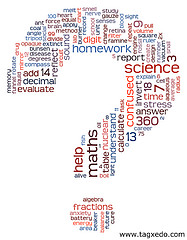 I want to study my middle school students’ perceptions of what and how they are learning in science. Do you have any suggestions other than a traditional survey? —R., Ohio
I want to study my middle school students’ perceptions of what and how they are learning in science. Do you have any suggestions other than a traditional survey? —R., Ohio
I found some research on the topic at Drawn to Science: Studying Science Teaching and Learning Through Drawings. The authors examined “how the science teaching identity of the teacher interns/teachers changed over time” based on their experiences. Rather than a traditional questionnaire, this study used drawings as evidence. Periodically, the teacher-participants responded to two prompts:
- Draw yourself teaching science
- Draw your students learning science
The methodology and the scoring rubric are on the website. It’s interesting to examine how drawings represent a teacher’s self-image of the teaching and learning processes and the perceived roles of teachers and students in these processes.
Another part of the website targets educators, offering:
- Lesson plans with suggestions for asking students to draw their interpretations of science learning. Follow-up discussion questions are included.
- A description of the action research process and how drawings can be a data tool.
These lessons could be used several times throughout the year, perhaps with student notebooks, to monitor how students’ perceptions change over time and reflect on how student perceptions align with yours. It might be interesting to draw something yourself to compare to the students’ work.
But I wouldn’t discount traditional surveys. Although paper-and-pencil surveys are time-consuming to analyze, online tools (such as Google Docs) can efficiently survey students and aggregate the results into a spreadsheet document. The same survey can be used for different classes and at multiple times during the year to track student responses for your analysis and reflection.
From a clock’s ticks in the morning to a father’s snores at night, sounds are everywhere. That’s what an attentive boy discovers as he listens his way through a school day. He perceives that sounds can be loud or soft and low or high. And sometimes, he notices, things like butterflies and wiggling worms are so quiet, he can’t hear them at all.
From a clock’s ticks in the morning to a father’s snores at night, sounds are everywhere. That’s what an attentive boy discovers as he listens his way through a school day. He perceives that sounds can be loud or soft and low or high. And sometimes, he notices, things like butterflies and wiggling worms are so quiet, he can’t hear them at all.




